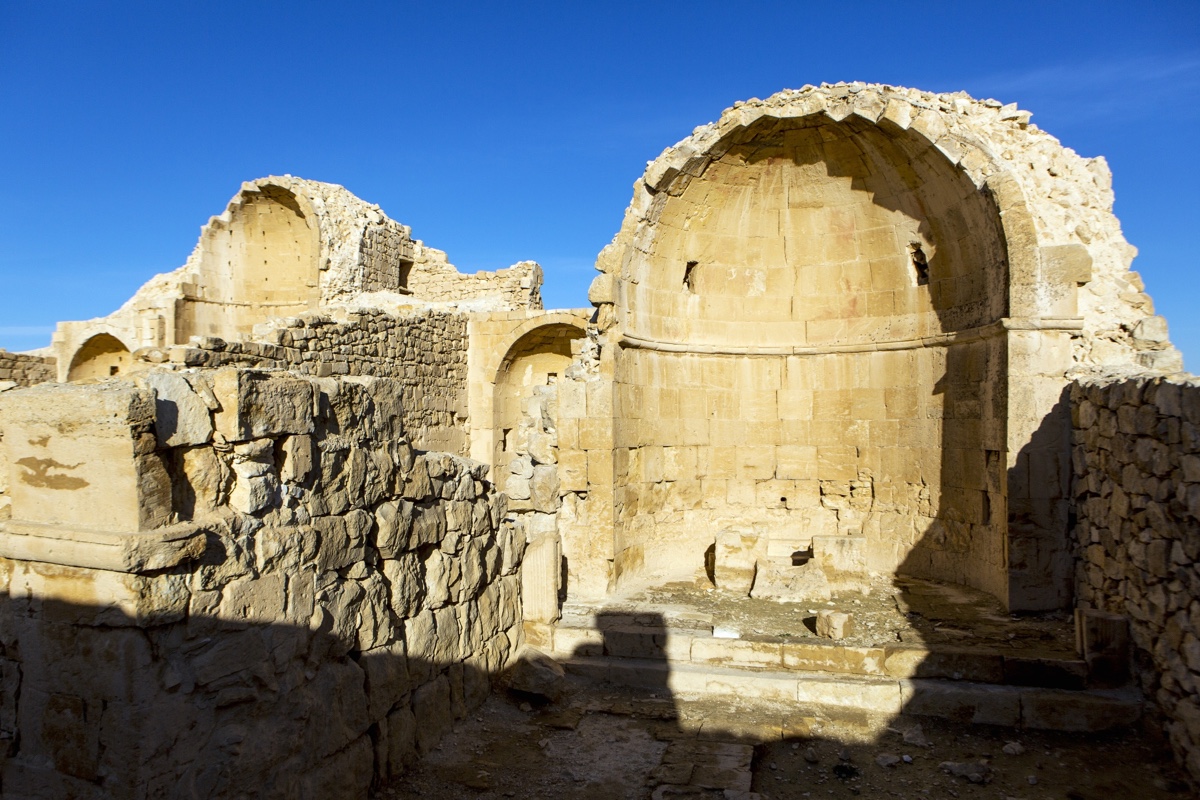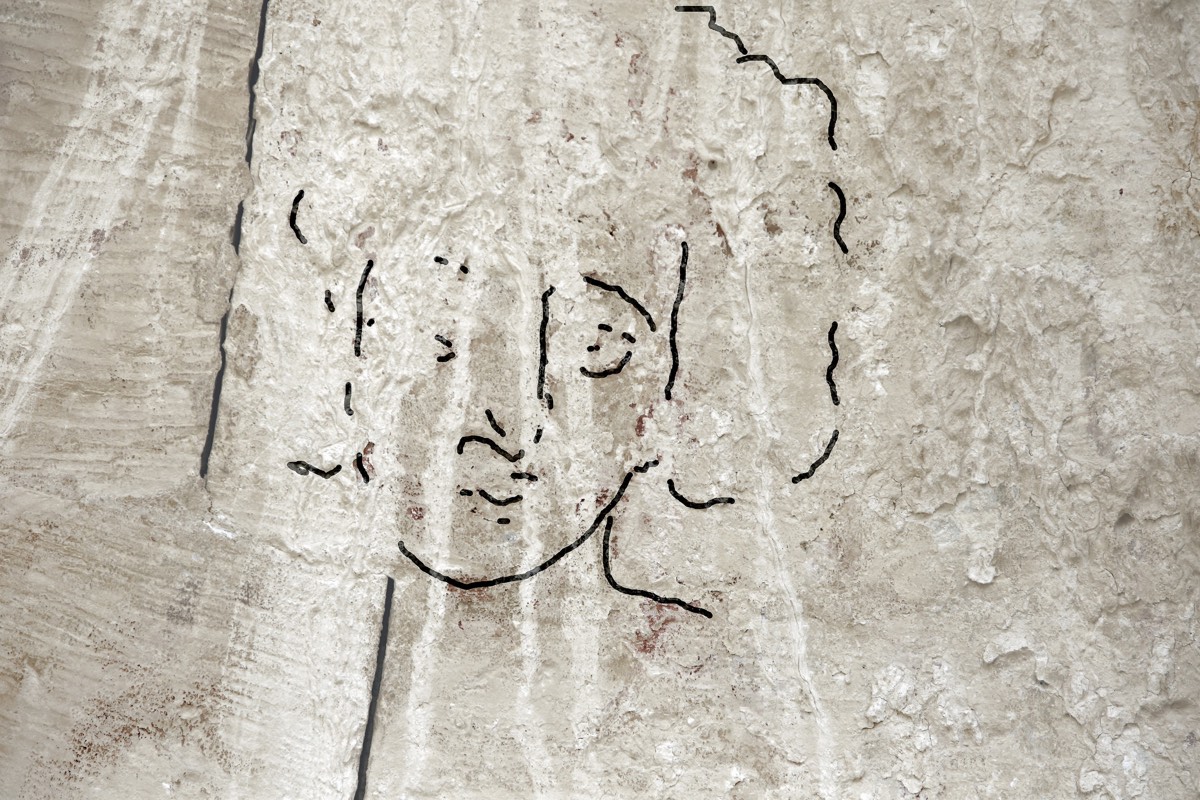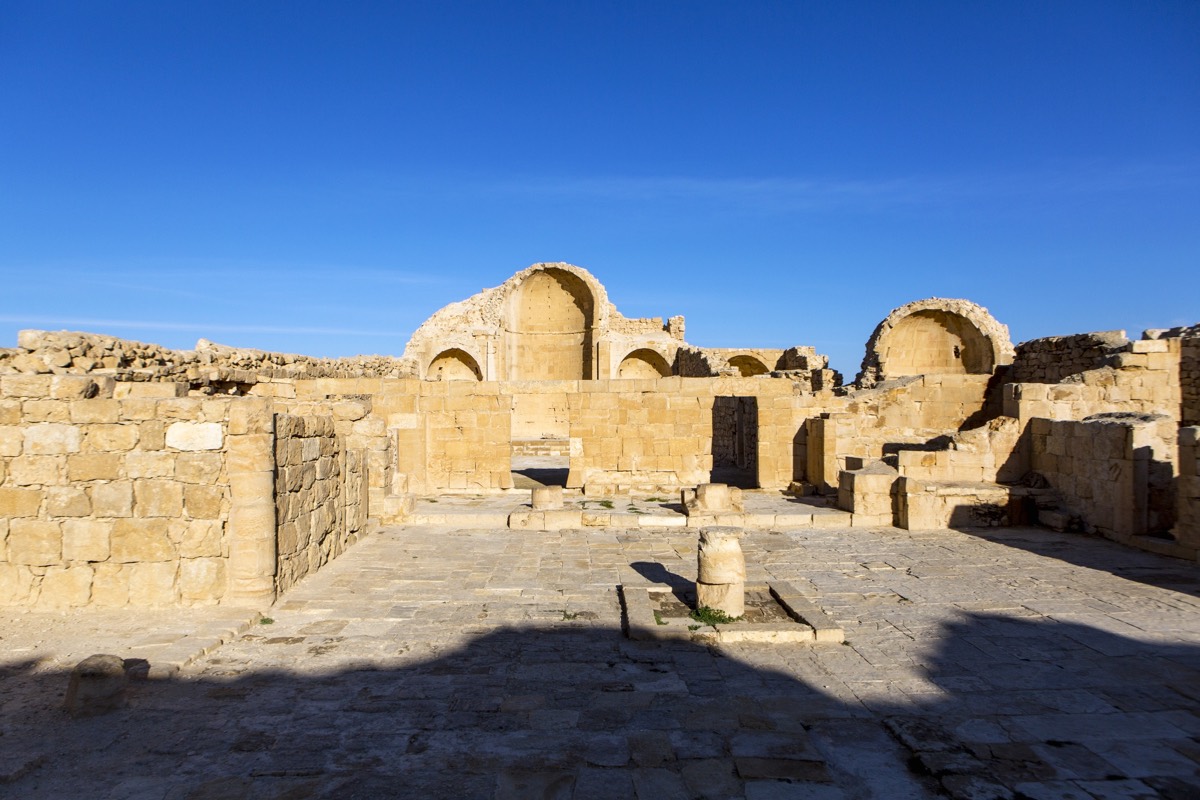Earliest Depiction of Jesus Christ in Israel Discovered. Here's What It Shows.

Emma Maayan-Fanar was looking for shade from the desert sun when she saw the face of Jesus.
The art historian from the University of Haifa in Israel had been studying crucifixes and other motifs on the stone lintels of the ancient churches and houses of the ruined city of Shivta in the Negev Desert.
Although it was February, days in the desert can still get hot — and so Maayan-Fanar found some shade under one of the few pieces of roof still intact at the site, in the baptistery of the northernmost of three ruined churches in the ancient city.
That's when she saw eyes looking out from the stones — the very faint remains of a portrait of Jesus Christ at his baptism in the Jordan River, painted on the ceiling of the building around 1,500 years ago. [See Photos of the Jesus Portrait and the Ruins of Shivta]
"Everyone describes it as like a miracle, and it was, for a moment," she told Live Science.
Maayan-Fanar called her husband, Dror Maayan, the photographer for the Israeli academic team working at Shivta, to take pictures of the painting on the stones of the baptistery ceiling. The results of their find in 2017 were recently published in the journal Antiquity.
The heavily eroded painting is now thought to be the oldest representation of Jesus Christ found so far in Israel, and one of the very few images from that time that shows details of his face.
Sign up for the Live Science daily newsletter now
Get the world’s most fascinating discoveries delivered straight to your inbox.
The Christian ruins of the ancient desert city are thought to date from between the fourth and sixth century A.D.
Ancient paintings
Another painting found some years ago at Shivta, in the southernmost of its three ruined churches, shows Christ at his transfiguration — another key event described in the Christian gospels, which are thought to have been written in the first century after his death.
That painting, too, is heavily eroded; it shows only an outline of the figure of Christ and a single eyebrow.
But the painting on the ceiling of the northern baptistery — a building used for baptisms and containing the baptismal font — shows most of the face of Christ, as a young man with short, curly hair. [See Images of Jesus' House and Nazareth Artifacts]

The iconography of Christ with short hair was common throughout the east of the Byzantine Empire, Maayan-Fanar explained, especially in Egypt and the Syria-Palestine region. But it was eventually displaced by Byzantine images of Christ with long hair, which remains a common portrayal today.
Christ was also shown as a very young man, she said, because his baptism in the Jordan symbolized a "new birth." For the same reason, the painting shows a larger figure of John the Baptist, who is said to have presided at Christ's baptism, according to the Christian Gospels.
In their study of the baptistery painting, Maayan-Fanar and her colleagues describe the portrait of Christ as that of a youth with "short curly hair, a prolonged face, large eyes and an elongated nose." It represents a sixth-century convention of Christ's appearance, rather than his actual appearance, which is not described in the Gospels: "It would be wonderful, but how would we know?" she said.
Lawrence of Arabia
The ruined city of Shivta is about 25 miles (40 kilometers) southwest of the southern Israeli city of Beersheba. The region is now a national park and is listed as one of Israel's World Heritage sites by the United Nations cultural agency UNESCO.

The desert city dates from at least the first century. In later Byzantine times, it is thought to have been a caravan stop for Christian pilgrims on their way to St. Catherine's Monastery in the Sinai Peninsula.
Shivta declined as a population center during the early Islamic period from the sixth to the ninth centuries and was then abandoned, until it was rediscovered in the 19th century.
The ruins at Shivta were explored by English archaeologists in the 1870s and first studied scientifically in 1914 by two more English archaeologists, C.L. Woolley and T.E. Lawrence. The latter archaeologist would become famous during World War I as Lawrence of Arabia, a leader of the Arab Revolt against Ottoman Turkish rule.
Archaeologists who explored the ruined desert city in the late 1920s had briefly noted that there were traces of a painted scene on the baptistery ceiling of the northern church, but they had not recorded any details, Maayan-Fanar said.
The light conditions in the baptistery at the time the painting was found, along with subsequent studies using high-resolution photographic equipment, allowed the Christ portrait to be seen again: "If you don't have a good camera and a good photographer, nothing will be visible," she said.
The painting will now be recovered as much as possible using modern conservation techniques, she said. "It has to be done very carefully. The condition of the painting is very sensitive."
"I think much is hidden under the erosion. It is actually a much fuller image," Maayan-Fanar said.
- 8 Alleged Relics of Jesus of Nazareth
- Proof of Jesus Christ? 7 Pieces of Evidence Debated
- Images: The Church of the Holy Sepulchre
Originally published on Live Science.
Tom Metcalfe is a freelance journalist and regular Live Science contributor who is based in London in the United Kingdom. Tom writes mainly about science, space, archaeology, the Earth and the oceans. He has also written for the BBC, NBC News, National Geographic, Scientific American, Air & Space, and many others.










